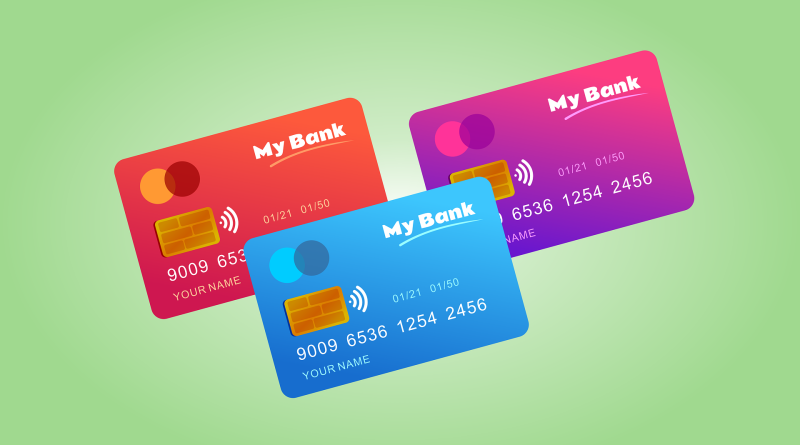Choose the Perfect Credit Card for You with These Tips
No single credit card is superior to all others in every situation or for every individual. The greatest card for your spending patterns and credit position can be found, though, if you know your alternatives and ask the correct questions.
1. Verify your credit
Check your credit score to see what credit card offers you might be qualified for. Your likelihood of being approved for cards with better benefits increases with your credit score. One method to determine your score is:
- Numerous credit card companies offer free FICO scores to cardholders.
- Credit ratings are offered for sale by the three major credit agencies (Experian, Equifax, and TransUnion).
Check your credit reports to see what’s wrong if the number isn’t what you expected. Then, if necessary, you can start thinking about methods to make it better, such as altering your purchasing patterns or challenging an error in the report. You are entitled to one free copy of your credit report every 12 months from each of the three major bureaus under federal law. Visit the federally approved website AnnualCreditReport.com to obtain your free reports.
2. Determine the credit card type you require
Three different categories of credit cards are available:
- Cards that assist you in repairing damaged or limited credit.
- Cards that reduce your interest costs.
- Reward-based credit cards.
The best card for you is one that has features tailored to your unique requirements. The best travel card in the world won’t help you much if you don’t travel much, for instance.
If you wish to improve or restore your credit: a secured credit card for students
Student credit cards are unsecured cards that are easier to qualify for than other credit card types. They are designed for college students who have never used credit cards before. The same goes for secured credit cards, which often demand a $200 security deposit or more. When the account is upgraded or closed in good standing, your deposit is returned to you.
Use a balance transfer or low-interest card to reduce your interest payments
If you intend to use your credit card only in an emergency or if you have inconsistent income, you might be a suitable candidate for a card with an introductory 0% APR and continued low interest. You might be able to eliminate your high-interest debt with the help of a balance transfer deal. Remember that if you have ordinary or worse credit, finding these offers could be more difficult.
If you wish to earn rewards: Travel, cash back, or rewards
If you always make the minimum payment due on your credit card each month and never pay interest, you’re a strong candidate for a rewards credit card. Although the sign-up bonuses are larger and you receive points, miles, or cash back for every dollar you spend with these cards, the APRs are often higher.
3. Limit your options by posing the appropriate questions
Consider these questions as you peruse the top choices.
For secured and student credit cards
Will this card help me establish credit? Choose a card that sends information about your credit card payments to the three main credit reporting agencies. Numerous secured cards don’t perform this.
What does opening an account cost, including the annual fee? These cards typically don’t offer enough rewards to justify an annual fee. Unless your credit is extremely bad, you can probably avoid this fee. Although your credit limit might be directly correlated to the size of your security deposit, for secured cards, the lesser the security deposit, the better.
Can I eventually upgrade to a better card? Select a card that will enable you to establish credit so that you can later switch to one with more enticing terms. This makes it simpler to keep your card open for longer, which eventually raises the average age of your accounts.
For balance transfer or low-interest credit cards
What is the duration of the 0% APR term and what is the APR for continued interest? Find a card that offers you adequate time to pay off your debt without incurring interest. If you intend to carry sums over a number of years, look at credit cards with low continuous annual percentage rates (APRs).
What is the balance transfer policy for the card? Look into a card’s balance transfer costs before transferring a balance. Find out which debts you can transfer and if there is a maximum amount you can do so. Be aware that a card’s purchase and balance transfer APRs could vary.
The card offers incentives, right? Instead of a sign-up bonus, you might be able to discover a card that offers large recurring benefits if you’re only seeking a short period of 0% APR.
For cards with rewards, travel, or cash back
What do I do with my money? Find a credit card that offers the best rewards for the things you spend the most money on. If you have a high spending habit, think about acquiring a card with an annual fee provided your rewards earnings will cover it. Choose a credit card with no international transaction fees if you intend to use it overseas.
How difficult is this credit card to use? Consider a card with flat-rate cash-back benefits if you don’t want to deal with restrictions on award seat availability, spending limits, revolving bonus awards, and loyalty tiers.
4. Make an application for the credit card with the best overall value
It’s simple to narrow your options, but choosing between two or three identical cards can be challenging. Go with the option you’ve already identified as the winner following Step 3. If not, a tiebreaker round must be played.
Keep an eye out for variations. Here are some characteristics that, given other values being equal, might distinguish a card:
- Automatic increase in credit limit for secured and student cards. After a string of timely payments, you may be able to extend your limit on some cards.
- Payment of interest on your deposit. Your security deposit may be put into an interest-earning CD by some secured credit cards. You can make a little money off of it in this way.
- Debt payoff planner for balance transfer or low-interest cards with 0% APR. If you’re drowning in debt, some issuers allow you to design your own debt payoff strategy on an online portal.
- No late fees or APR penalties. These fees are waived for some cards. This could be useful if you get behind on your payments.
For cards with rewards, travel, or cash back:
lower necessary expenditures. You should spend as little as possible to be eligible for a sign-up bonus.
There is no time limit on awards. You can utilize your rewards on various cards as long as you keep the card open.
When choosing a card, keep in mind that you can list whatever money you have reasonable access to—not just your own income—on the application. Students may receive money from grants, scholarships, or parent-given allowances. Others might also consider their spouse’s or partner’s salary.
You’ve thus discovered the best credit card. Next, what?
It’s crucial to pick the greatest credit card but don’t stop there. To get the most value for your money, use your card properly. Pay all of your bills on time each month if you’re attempting to build credit, and don’t overextend yourself. If you secured a 0% APR agreement, follow your debt repayment strategy. Use your card for regular purchases and pay off your account in full each month if you want to accrue points.
Whether you’re looking to establish credit, borrow money, or accumulate rewards, the credit card you use should assist you in achieving your financial objectives in the most reasonable, effective manner possible.




